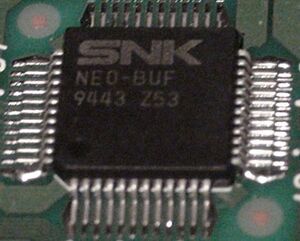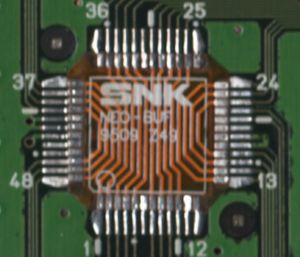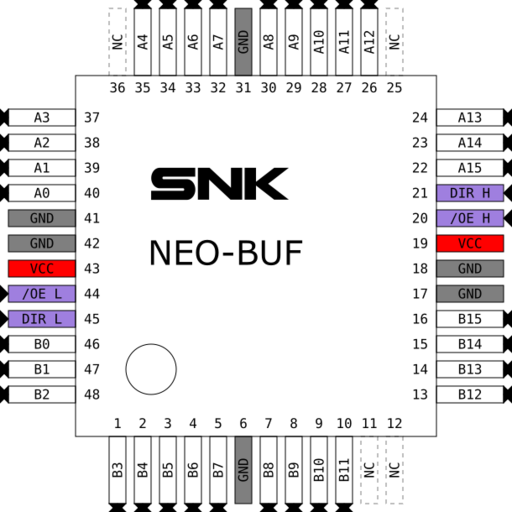NEO-BUF: Difference between revisions
Jump to navigation
Jump to search
m (→Pinout) |
m (→Replacement) |
||
| Line 19: | Line 19: | ||
==Replacement== | ==Replacement== | ||
[[File:Neo-buf_bypass.jpg|thumb|Picture from MVS-Scans]] | [[File:Neo-buf_bypass.jpg|thumb|Picture from MVS-Scans]] | ||
On | On the {{PCB|MV1A}} and {{PCB|MV1B}}, one NEO-BUF chip is used as a uni-directionnal buffer for the [[68k]] data bus. Some of these faulty chips were replaced by small passive pass-through boards by third parties, which may cause some games to crash: | ||
* MV1B: GA1 on the SLOT1B board | |||
* MV1A: GA11 | |||
* GA1 on the SLOT1B board | |||
* GA11 | |||
[[Category:Chips]] | [[Category:Chips]] | ||
[[Category:Repairs]] | [[Category:Repairs]] | ||
Latest revision as of 03:37, 5 October 2023

| |
| Package | QFP48 |
| Manufacturer | |
| First use | 1994 ? |
| Used on | MV1A MV1B NEO-CDM3-2_board |
Dual 74HC245 octal transceivers in one chip. This chip is extensively used in CD systems to multiplex subsystem and 68k accesses to DRAMs.
Also found on late MVS boards.
Pinout
Replacement

On the MV1A and MV1B, one NEO-BUF chip is used as a uni-directionnal buffer for the 68k data bus. Some of these faulty chips were replaced by small passive pass-through boards by third parties, which may cause some games to crash:
- MV1B: GA1 on the SLOT1B board
- MV1A: GA11
